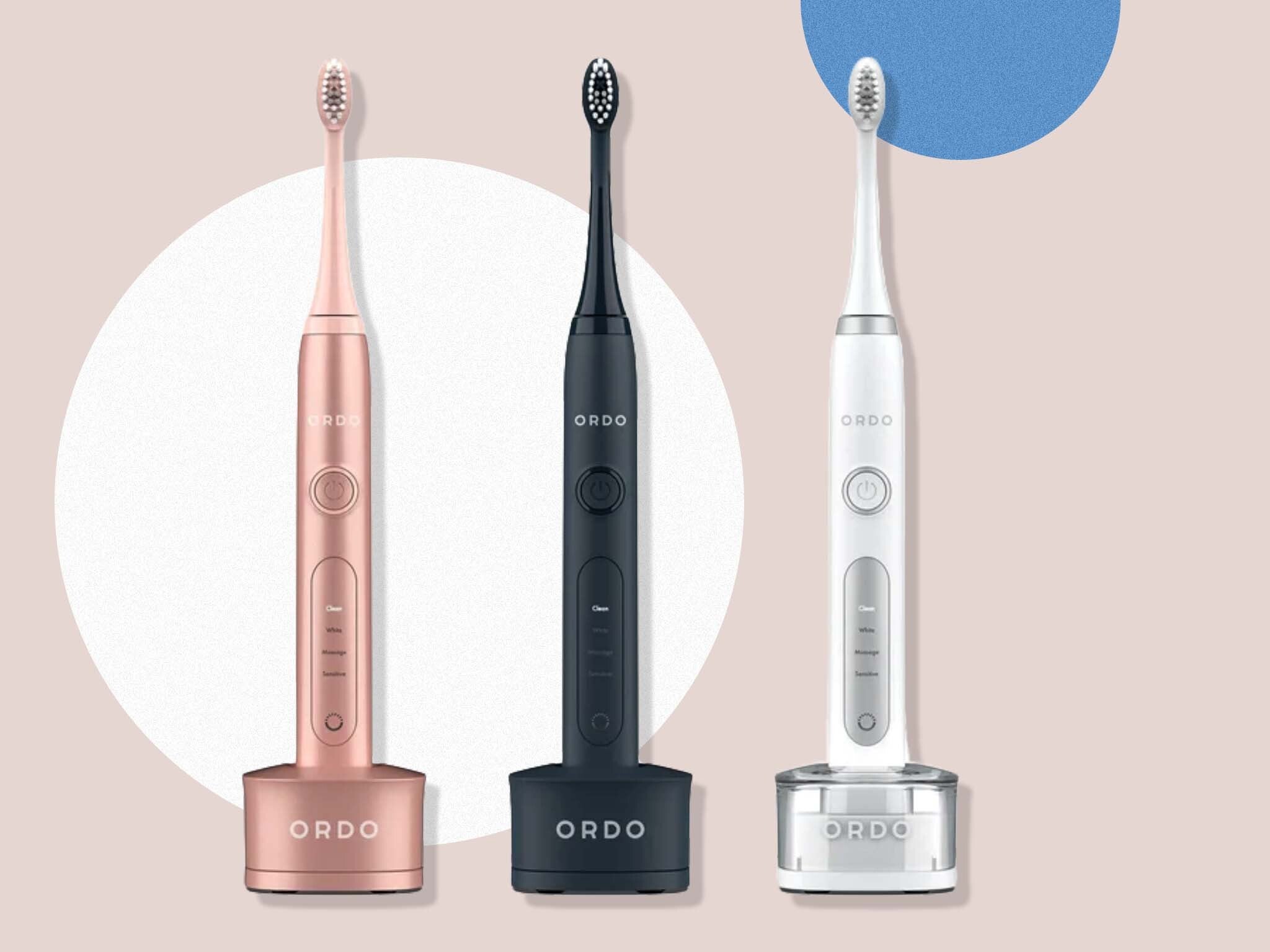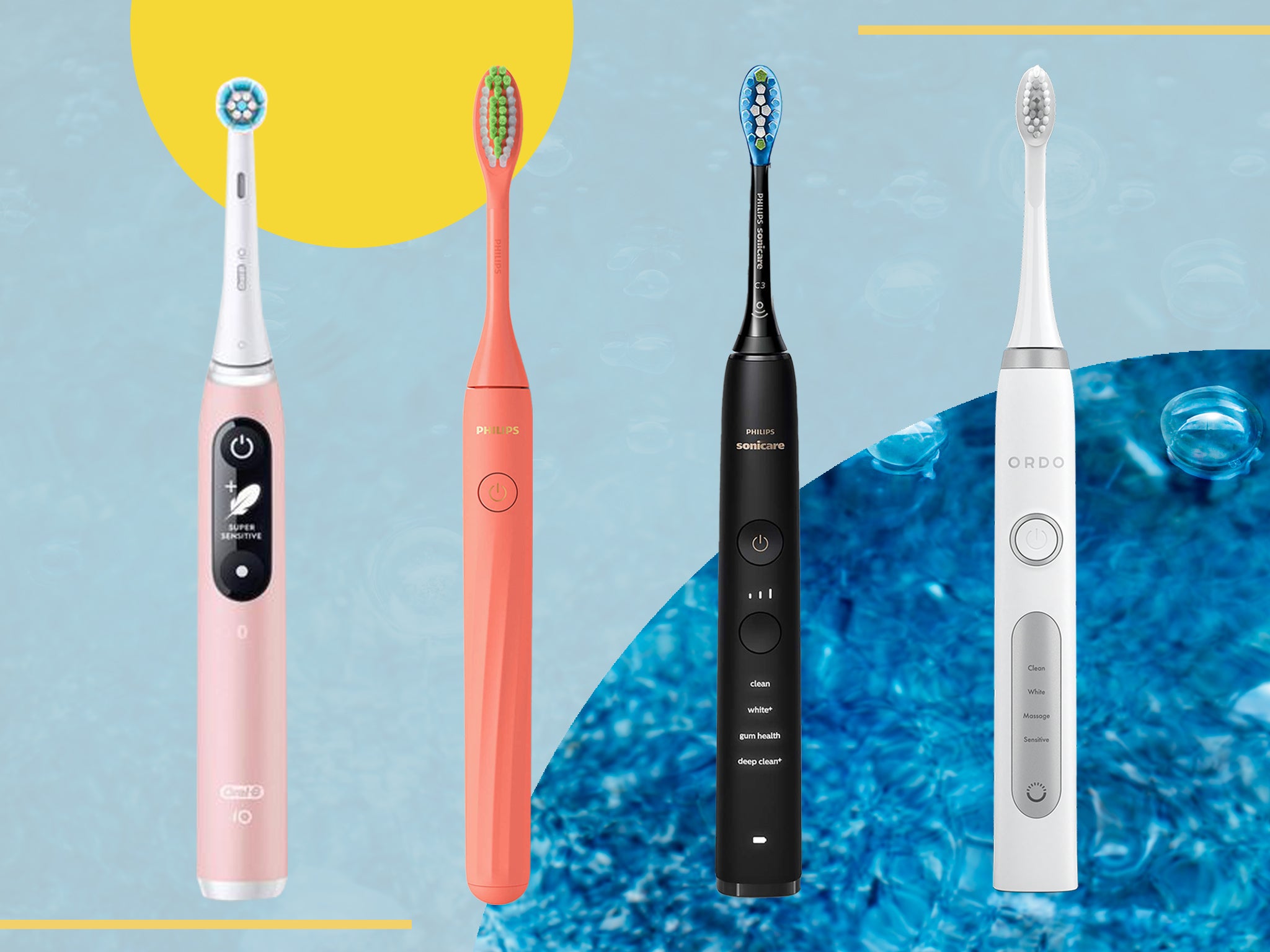Ordo sonic + electric toothbrush

- Modes: Clean, white, massage and sensitive
- Battery type: Li-ion
- Accessories: USB charging base, travel cap
- Battery life: Almost four weeks
- Returns: Two-year warranty
- Travel case: Travel cap included
- App connectivity: No
Design and ergonomics
The first thing you’ll notice about the Ordo sonic + is that it’s incredibly light, compared with many smart brushes. Obviously, this is because it doesn’t have all the gyroscopes, accelerometers and axis sensors packed into the handle to feed data back to an app.
There’s also no pressure sensor adding weight (more on that later), which means it’s very easy to move around the mouth, with a nicely profiled brush head that covers all the quadrants, including the molars at the back.
The handle has a similar tactile feel to a brush from the Philips Sonicare range and doesn’t have that clumsy characteristic that makes you wonder how you’re going to keep hold of it once it gets wet.
Cleaning
The Ordo sonic + brushes sonically, moving rapidly from side to side over the surface of the teeth, backed up by sonic vibrations that have an agitating effect on the mixture of toothpaste and fluids in the mouth.
The brush head looks similar to Sonicare’s offerings and we liked the W-shaped bristle profile, which enabled us to cover all the exposed surfaces of our teeth. The brush head also has a cross in the middle of the bristles, made from silicone, which helps whiten and polish the teeth as you brush, and both our testers felt this addition was very effective in getting rid of longer-term stains.
Read more: Philips Sonicare 5100 electric toothbrush review
Although it employs the same technology as brushes in the Sonicare range, there are actually fewer strokes per second – 40,000, compared with Sonicare’s 62,000.
Both testers reported that they noticed a much gentler cleaning experience on the initial clean mode (which is only 31,000 strokes per minute) than they were used to, and ended up switching to the white mode to be left with the feeling that their teeth had been properly cleaned.
However, even on this mode, the reduced pulsing meant the clean didn’t feel quite as intense and thorough as when using a Sonicare or oscillating product. We had no doubt teeth were thoroughly cleaned, but there wasn’t that fresh-from-the-hygienist feeling you get when using a brush with a higher-intensity pulse pattern.
Read more: Sanyei ion-sei electric toothbrush review
Both testers reported they didn’t miss having to check their phones to see a brushing breakdown and felt they had achieved good coverage and a total clean without the need for any in-app affirmations.
One feature that was missed was an in-handle sensor that lights up to let you know when you’re applying the right amount of pressure to the teeth – something that you do get from the Oral-B iO range. Both testers mentioned this was one real-time feature they rely on when brushing.
Battery life
The charging dock is basic and, instead of being plugged into a bathroom shaver socket, it has a USB connector, so you’ll have to take it out of the bathroom and find an electrical socket or laptop to charge the brush.
The brush can be fully charged overnight and can then sit quite happily in your bathroom for almost four weeks, brushing twice daily for two minutes.
Value for money
Like we said at the outset, the Ordo + is one of the cheapest sonic brushes available, although it doesn’t come with any replacement heads, unlike, for example, the Spotlight Oral Care sonic brush. Three replacement heads cost £15, compared with the Spotlight’s £29, so you’ll need to factor that into your purchasing decision.
Also, if you want one of the two new colours available, you’ll have to pay an extra £5 for the paint job.




